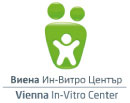Returning the embryos: embryo - transfer
|
The transfer of one or more embryos into the uterus, the so called „embryo transfer“, is a key process of the IVF treatment. The decision on how many embryos should be re-implanted into the uterus is one of great importance. How does the decision to implant just one embryo influence the rate of pregnancy? In order to answer this question, a major examination with women below the age of 36, each with at least two embryos of good quality available for transfer, was conducted. In 30 out of 100 women a pregnancy was achieved when an embryo was implanted. If the second embryo was cryopreserved and implanted at a later time, 9 out of 70 remaining women got pregnant. Ultimately for 39% of these women this “1 + 1” procedure was proven successful. 43% got pregnant if two embryos were implanted. A third of all pregnancies turned out to be a pregnancy resulting in twins though. We want to clarify that freezing and thawing a sole embryo does not provide a sure opportunity that it will be suitable for implantation afterwards. |
|
|
What are the risks of a multiple pregnancy? On average, twins are born two weeks and triplets six weeks too early. Compared to “IVF one-child pregnancies”, some distinctive elements were discovered for “IVF – twins”*: 1) they are born before nine months * based on the results of two major Danish studies. These differences are even more significant for pregnancies with triplets! What should be considered during decision-making? We recommend you carefully consider whether you would like one or two embryos implanted. It goes without saying that a final decision is possible only after we have informed you of the amount of fertilized egg cells, how many embryos developed, and of what quality they are. Please consider a transfer of one embryo if Furthermore the transfer of an embryo needs to be considered, if In individual cases you are able to decide for three or more embryos to be implanted. This can be taken into consideration after two or more failed IVF attempts, or if you are older (> 40). You have to be aware that even with a bad prognosis a multiple pregnancy is still possible (with all implied risks). In rare cases, the cervix needs to be expanded (for the embryo transfer). This is because of the fact that the embryo transfer catheter is very soft and it might not be possible to push this catheter into the uterine cavity. Following the cervix’s expansion an infection of the uterus can possibly occur (with all health-related problems and risks). |
|



